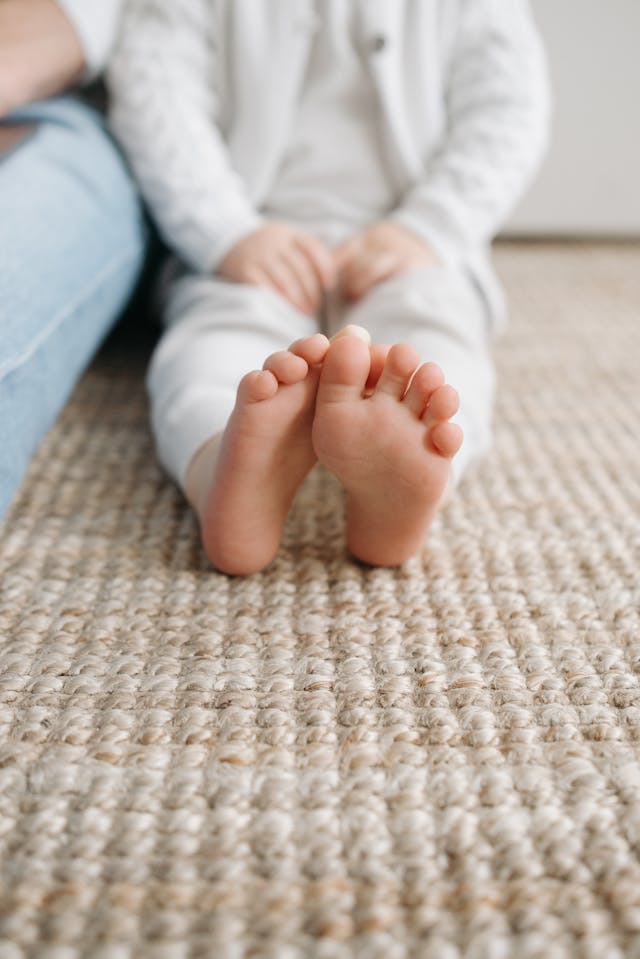Thinking about our kids’ feet can be a little nerve-wracking, can’t it? They grow so quickly, and we know proper foot care is essential. Overlooking those little feet can lead to issues like flat feet, alignment problems, or just general discomfort. But don’t worry, you’re not alone! This article will walk you through the key steps in keeping your children’s feet healthy and happy from babyhood to their teen years.

Taking care of your children’s feet is a vital aspect of their overall health. If you’re looking for specialized care and treatment for foot and ankle conditions, particularly those affecting children and adolescents, a specialized Foot Ankle & Leg Vein Center provides comprehensive podiatric services. They offer expert diagnosis and treatment for a wide range of foot issues, ensuring your child’s feet are in the best possible hands.
The Foundation: Understanding Foot Development
Remember those cute little baby toes? A baby’s foot is mostly cartilage, gradually hardening into bone. Growth plates play a significant role in this, remaining sensitive to pressure and injury until the teen years. Knowing this helps us understand why proper support and care are critical.
“A child’s foot isn’t just a small adult foot,” explains Dr. Emily Carter, a pediatric podiatrist. “The flexibility and rapid growth require special attention to footwear and early intervention if problems arise.”
Foot Care Through the Years: An Age-by-Age Guide
Let’s look at foot care tips specific to each age group.
Infants (0-12 months): Freedom to Wiggle
Barefoot is best for babies! Allowing them to kick and wiggle helps develop muscles naturally. When needed, opt for soft, flexible socks or pre-walker shoes.
- Warning Sign: Clubfoot or toes curling under. Consult your pediatrician if concerned.
- Real Parent Tip: “I noticed my baby’s toes were slightly curved. The pediatrician recommended gentle stretches, and it corrected itself within a few months!” – Sarah M.
Toddlers (1-3 years): Exploring the World on Foot
Toddlers are always on the move. Let them walk barefoot indoors to strengthen foot muscles. Outside, choose soft-soled, flexible shoes that allow natural movement.
- Warning Sign: Persistent toe-walking or in-toeing (feet turning inward).
- Activity Idea: Set up a mini obstacle course with different textures like carpet, blankets, and pillows to encourage varied foot movement.
Preschool & Early Childhood (4-7 years): Growing by Leaps and Bounds
Growth spurts mean frequent shoe size checks (every few months!). Teach good hygiene: washing and drying feet daily.
- Activity Idea: Create a “foot spa” with warm water and gentle soap. Let them scrub their feet with a soft brush.
- Shoe Shopping Tip: Involve your child in picking out shoes that fit well and are comfortable.
School Age (8-12 years): Building a Strong Foundation
Poorly fitting shoes can affect posture and even the spine. Monitor for issues like flat feet, heel pain, or limping.
- Product Recommendation: Consider cushioned socks for added comfort and support during sports. Brands like Nike and Adidas offer quality options.
- Cost Consideration: Expect to spend $10-20 for a pack of good-quality athletic socks.
Teenagers (13-18 years): Taking on the World
Growth spurts are common, so teens’ feet can change rapidly. Ensure proper footwear for sports and everyday activities to prevent injuries. This age group is prone to athlete’s foot, bunions, or plantar fasciitis.
- Troubleshooting: For athlete’s foot, try over-the-counter antifungal creams. For bunions, discuss shoe options with a podiatrist.
- Real Parent Experience: “My daughter started complaining about heel pain during soccer practice. It turned out to be plantar fasciitis. With supportive shoes and stretching exercises, she was back on the field in a few weeks!” – Mark L.
Choosing the Right Shoes: A Step-by-Step Guide
- Measure Both Feet: Feet aren’t always the same size.
- Consider Foot Shape: Wide feet need shoes with a wider toe box.
- Activity Matters: Running shoes differ from casual shoes.
- Hand-me-Downs: Avoid if possible. Shoes mold to the previous wearer’s foot.
- Look For: Good arch support, flexibility, and breathable materials.
Common Foot Problems: When to Seek Help
- Flat Feet: Feet appear to have no arch when standing.
- Ingrown Toenails: Painful nails that grow into the skin.
- Warts: Contagious growths caused by a virus.
- Overpronation: Foot rolls inward excessively when walking.
Self-Care: Warm water soaks or over-the-counter treatments may help minor issues.
See a podiatrist if:
- Your child experiences significant pain.
- The problem worsens.
- You’re unsure how to treat the condition.
Fun Foot Care Habits: Making it a Routine
- Hygiene Routine: Washing, drying, and trimming nails regularly.
- Foot Exercises: Picking up marbles with toes, walking on tiptoes, or heel raises.
- Open Communication: Encourage your child to tell you about foot pain.
The Importance of Orthotics: A Discussion with Dr. Jennifer Lee
“Orthotics can be incredibly beneficial for children with certain foot conditions,” explains Dr. Jennifer Lee, a leading podiatrist specializing in pediatric care. “Conditions like severe flat feet, excessive pronation, or structural abnormalities can often be managed and improved with the right orthotic support.”
- Custom vs. Over-the-Counter: Dr. Lee emphasizes that custom orthotics, made specifically for a child’s foot, are often more effective than over-the-counter options.
- Indications for Orthotics: Common reasons to consider orthotics include:
- Persistent foot pain
- Uneven shoe wear
- Frequent tripping or clumsiness
- Diagnosed foot conditions
“The cost of orthotics can vary widely,” notes Dr. Lee. “Over-the-counter options might range from $30 to $75, while custom orthotics can cost several hundred dollars. It’s essential to discuss the best option for your child with a podiatrist.”
Case Study: Emily’s Flat Feet Journey
Emily, age 7, was diagnosed with flexible flat feet, which caused her significant discomfort during physical activities. Her mother noticed that Emily would often complain of aching feet after playing and that her shoes wore out unevenly.
- Initial Assessment: A podiatrist examined Emily’s feet and confirmed the diagnosis. The doctor recommended custom orthotics to provide arch support and correct her gait.
- Treatment and Results: After wearing the orthotics consistently for six months, Emily reported significantly less pain. Her mother also observed improved shoe wear patterns.
- Ongoing Management: Emily continues to wear her orthotics during activities and gets regular check-ups to ensure the effectiveness of the treatment.
Seasonal Considerations: Year-Round Foot Care
- Summer: Emphasize breathable sandals and foot protection at pools or beaches to prevent fungal infections. Encourage barefoot time in safe environments like grassy areas.
- Winter: Ensure boots fit well and provide insulation without being too tight. Encourage kids to change out of boots indoors to prevent excessive sweating.
- Fall and Spring: Encourage breathable socks during sports and outdoor activities.
Conclusion
Proactive foot care, including proper footwear, regular foot checks, and good hygiene, can make a world of difference in your child’s well-being. By paying attention to their feet and encouraging them to do the same, you can help prevent problems and ensure they enjoy a lifetime of happy, healthy feet!
















Add Your Comment